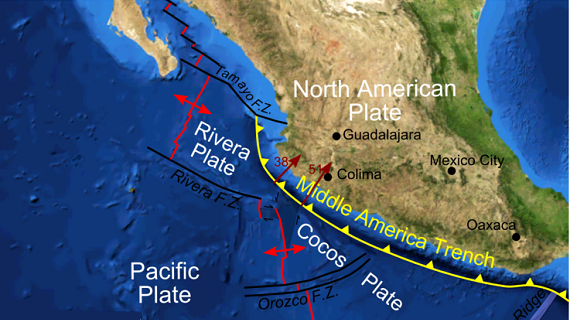Last updated October 20, 2017 at 10:37 am
A magnitude 7.1 earthquake has struck central Mexico, killing over 226 people and toppling many buildings.
It comes on near the anniversary of a magnitude 8.0 earthquake that struck Mexico in 1985, with a devastating death toll over 5,000.
This most rece nt quake occurred within the North American Plate, which is influenced by the movement of the middle America Trench which moves more than 7cm per year. Dr. Behzad Fatahi is an Associate Professor of Geotechnical and Earthquake Engineering at The University of Technology, Sydney (UTS) and explains why the impact of the quake is so damaging:
nt quake occurred within the North American Plate, which is influenced by the movement of the middle America Trench which moves more than 7cm per year. Dr. Behzad Fatahi is an Associate Professor of Geotechnical and Earthquake Engineering at The University of Technology, Sydney (UTS) and explains why the impact of the quake is so damaging:
“Due to soft soil underlying layers, buildings rotate and rock against foundations more severely in the reclaimed lands and areas with ancient lake soft clay beds. Amplified displacements of structures after earthquakes have resulted in significant cracks to internal walls and significant damage to building façades that can result in rising causalities and death tolls inside and outside buildings after earthquakes.”
Dr Fatahi adds that in regions like Mexico city, built on soft clay soils, large ground movements can damage essential services like gas pipelines which increase the risk of other devastating side effects of earthquakes due to fire.
“In addition, it is not unusual in Mexico for structures in metropolitan areas to be built very close to each other. Therefore during a strong seismic event such as this, it is highly likely that neighbouring buildings interact due to seismic pounding, leading to severe damage and possible collapse.”
Image credit: Mikenorton/Wikimedia
Expert comments gathered by the Australian Science Media Centre (AusSMC).
Follow us on Facebook, Twitter and Instagram to get all the latest science.

































































































































































































































































